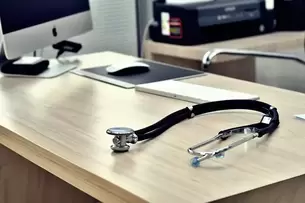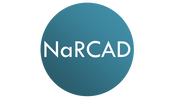|
An interview with Julie Anne Bell, MPH, Program Manager of Clinical Operations, Bureau of HIV, New York City Department of Health and Mental Hygiene. The mission of the Clinical Operations and Technical Assistance Program (COTA) is to provide innovative, culturally responsive, needs-based technical assistance and training to organizations and individuals working with people impacted by HIV. by Anna Morgan, RN, BSN, MPH, NaRCAD Program Manager Tags: Detailing Visits, E-Detailing, HIV/AIDS, Materials Development  Anna: Thanks for joining us today, Julie Anne! Can you tell us about yourself and what brought you to your role as Program Manager of Clinical Operations at the New York City Department of Health and Mental Hygiene? Julie Anne: My first position out of graduate school was as a research assistant in the HIV program at the State University of New York. I’ve moved through a lot of sexual health work and have been with the Bureau of HIV at the New York City Department of Health and Mental Hygiene for three years. I love the programmatic work that I do in my current role. I deliver training, tailored technical assistance and public health detailing to clinical and non-clinical providers who care for people with HIV. Being a content expert and bringing the information directly to the clinics to support them is rewarding and, most of all, fun.  Anna: It sounds like your career path has led you to a wonderful position! What detailing topic is your program currently working on? Julie Anne: We’ve been focused on developing a public health e-Detailing campaign to support and strengthen providers’ initiation of immediate antiretroviral treatment, or “iART”. iART is for people newly diagnosed with HIV or returning to care after a long lapse. It recently became a standard of care in New York. Immediate initiation of ART is associated with several health benefits for people with HIV, including a significant decrease in the time to viral suppression, which ultimately, reduces the risk of disease progression, morbidity, and mortality for people with HIV as well as onward transmission and new HIV diagnoses. Prescribing ART immediately versus waiting for the patient to return after all lab work/genotype results come back can feel like a paradigm shift for providers, but HIV medications have advanced so much in terms of their high threshold to resistance and there is no longer a need to wait. Anna: Your team recently completed a campaign on strengthening the integrated care approach, which is a team-based approach where mental health care and medical care is offered to patients in the same setting. How did your previous campaign help shape your new iART campaign?  Julie Anne: During our previous campaign, we brought providers an array of materials and resources to help them meet New York City’s Ending the Epidemic benchmark. We included HIV-specific materials and resources, as well as additional tools to address substance use, housing, and mental health in order to strengthen their integrated care approach. Among those HIV-specific materials and resources was information about iART. During our detailing sessions, providers were consistently reporting the same barriers to implementing iART in their clinics. Barriers that were reported were lack of clinic workflow for iART, not knowing how to get the medications covered/paid for immediately, and feeling uncomfortable prescribing ART before receiving a lab based confirmatory HIV test and genotype testing result. We began to realize that the providers needed more support around this topic. Because our work is heavily data driven, we used the feedback we received from providers on the barriers they were experiencing around implementing iART to create our iART campaign and associated public health detailing action kit. The tools and resources in our detailing action kit highlight each component of iART, including HIV testing, payment options, genotype testing, and example clinic workflow. In the past, our program developed the public health detailing action kits and would hire consultants to do the detailing. For these campaigns, my colleague and I wanted to deliver the messages to the clinics ourselves and focus on relationship building. Anna: Having strong detailer-clinician relationships is an integral piece of a successful academic detailing program. How have you been able to build strong relationships with clinicians?  Julie Anne: We visited over 100 clinics that provide HIV services in New York City during our last detailing campaign, and we now have friendly relationships with these providers because of the trusting relationships we’ve built with them through our previous detailing work. Our team also attends regional group meetings for HIV providers to bring more awareness to our work and continue to build relationships and connections. We recently hosted a virtual launch event for our iART campaign and we had over 200 providers register. We provided an overview of COTA, our services, and e-Detailing. We wanted the providers to know exactly how we’ve pivoted during COVID-19, why this work is still important, and that we would reach out to them in the coming weeks for an e-Detailing visit. Being with the health department, we know where people are getting their care for HIV in New York City. We’d love to reach everyone who’s working with people who are impacted by HIV, including non-clinical providers. Since iART is an integrated care approach, both clinical and non-clinical providers are an integral part of the process. The first steps in the iART process begin with a positive HIV test which can happen in a non-clinical setting, such as a community-based organization. The next steps include looping in a medical provider with the addition of non-clinical support, such as benefit navigation, social work, and peer navigation. It can take multiple providers of different training and expertise to work together to achieve iART seamlessly.  Anna: Wow! You’re certainly connected to a lot of clinics and it doesn’t sound like you’ll have issues recruiting clinical or non-clinical providers for your upcoming e-Detailing visits. How has your team prepared for e-Detailing? Julie Anne: When the reality of the pandemic hit, the idea of transitioning our detailing program to a virtual platform was overwhelming. We did a deep dive into the existing literature to see how programs have done virtual detailing in the past. NaRCAD has also been an amazing resource to learn from and we continually check the website for new resources on e-Detailing. We then developed a Standard Operating Procedure (SOP) for our iART e-Detailing campaign. We worked as a team to create a step-by-step guidebook that includes our key messages, how to do a needs assessment, and how to address barriers that we expect might come up. We’re currently working on doing mock e-Detailing sessions with our colleagues and with providers who are iART champions in New York City. Our SOP will help guide us during these mock sessions and help prepare us for our field visits this fall. Anna: Creating a Standard Operating Procedure is a great idea and will be extremely beneficial to prepare for field visits. What are some challenges that you expect to face when you begin your e-Detailing work? Julie Anne: We’re expecting the usual technical problems like poor internet connection and access issues, but we’re working on strategies to overcome this. We also expect that providers will be experiencing burn out, so they may be hesitant to make some of the changes in their clinic to implement iART, such as establishing a new clinic workflow. However, the resources we’ve selected and created for our iART detailing action kit are a direct result of what providers reported that they needed during our last detailing campaign. We’re hopeful that the tools we’re providing will enable an easy transition for providers to adopt our key messages related to iART.  Anna: It’s remarkable that you’ve been able to create your e-Detailing campaign based on the specific needs of the providers in your community. How else is your team working towards sustainability? Julie Anne: iART is a sustainable practice because once providers understand the “why” and “how” to do it and the steps involved, there is no reason to go back to waiting to initiate a patient with HIV on ART. It’s important that people with HIV are given the opportunity to start ART immediately because it provides individual and public health benefits. iART is the new standard of care in New York, which encourages providers’ commitment to the practice, and the iART detailing kit will introduce tools and resources to increase the knowledge and confidence of providers to prescribe ART immediately. Additionally, COTA offers ongoing technical assistance at the request of the providers and full-day trainings on iART for new providers. We’re currently focused on our iART e-Detailing project, but it’s always an open-door relationship with providers. Right now, it’s iART, but providers can reach out to us about anything they’re struggling with and we’ll work with them to overcome the challenges they’re facing. Have thoughts on our DETAILS Blog posts? You can head on over to our Discussion Forum to continue the conversation!  Biography. Julie Anne began working at the NYC Health Department in 2016 with the Bureau of Sexually Transmitted Infections in a research role. She transferred to the Bureau of HIV in 2017 where she focused on health policy work, and was promoted to her current role with the Clinical Operations team. She now manages the team that focuses on providing data-driven technical assistance to clinical and non-clinical HIV providers across New York City on HIV specific and supportive topics that address social determinants of health for people with HIV. Julie Anne is currently preparing to conduct e-detailing visits with NYC providers to support and strengthen practices for initiation of immediate antiretroviral treatment (iART) for people with HIV. Comments are closed.
|
Highlighting Best PracticesWe highlight what's working in clinical education through interviews, features, event recaps, and guest blogs, offering clinical educators the chance to share successes and lessons learned from around the country & beyond. Search Archives
|
